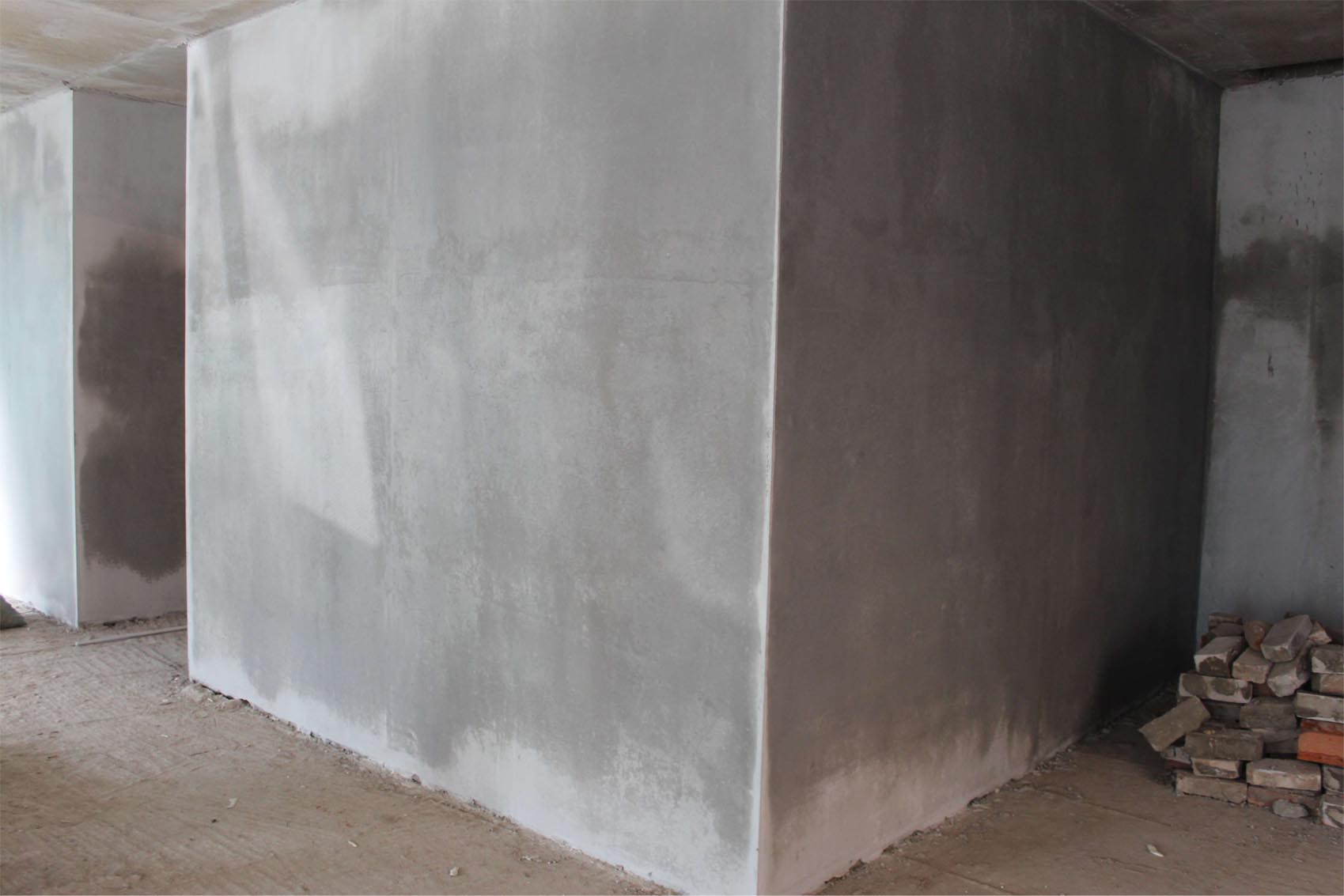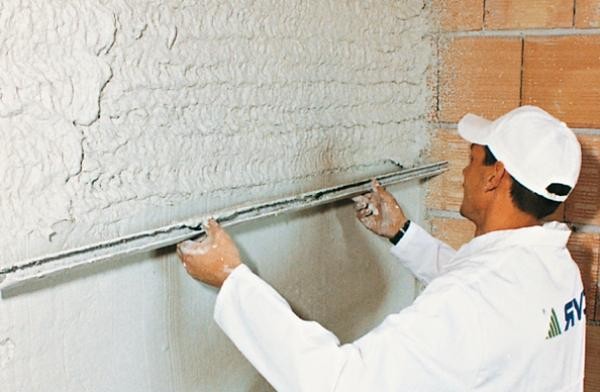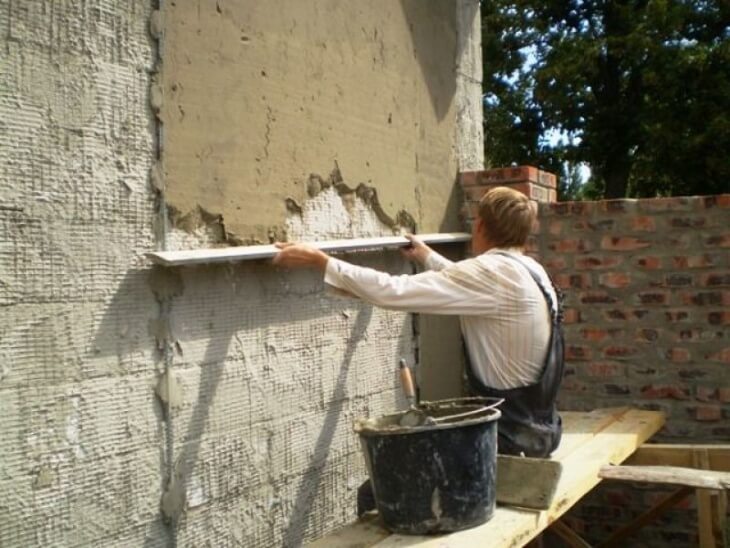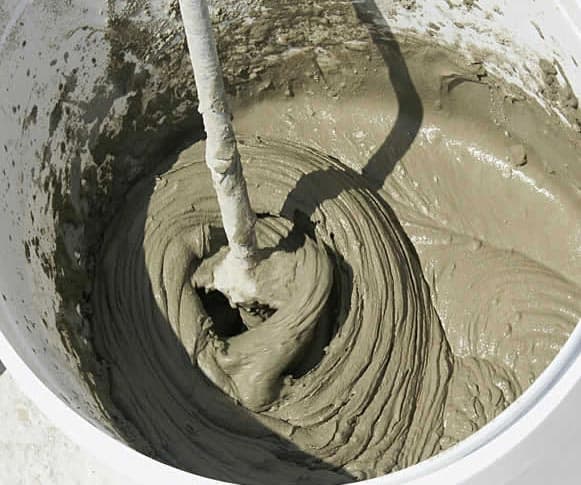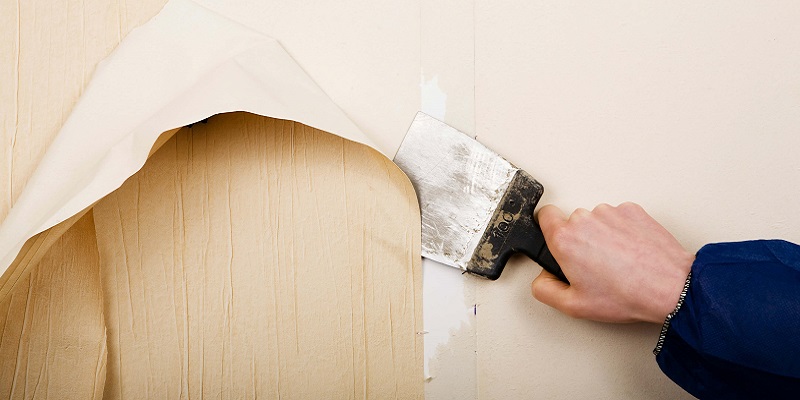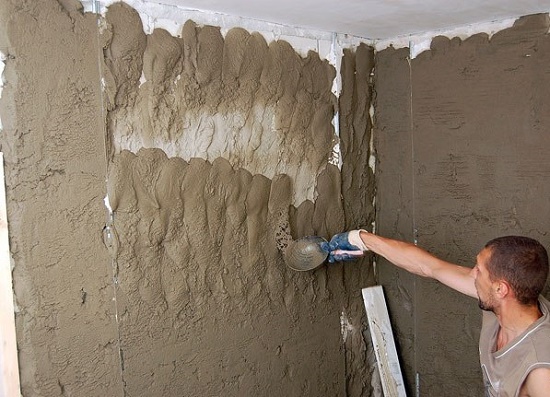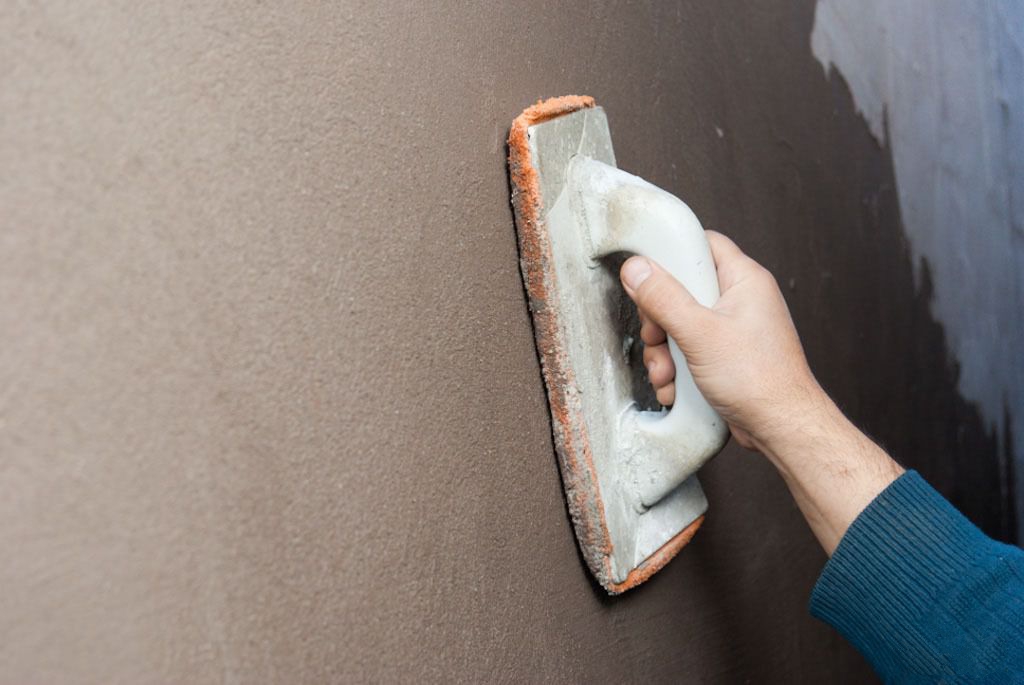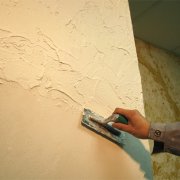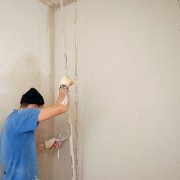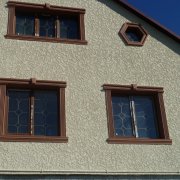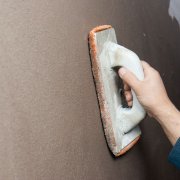High quality plaster
High-quality plaster is not a type of material, but a type of plastering of a building foundation. Usually this stage of decoration is performed by professionals. However, if an amateur is familiar with the rules of applying high-quality material, he can do plastering with his own hands.
The content of the article
The difference in the quality of plaster
According to SNiP, there are three types of surface plastering:
- Simple plaster. This method of surface treatment is used in non-residential premises, where the aesthetic side of the finish is not important. These include warehouses, underground, attic and other premises. The material is applied to prepared primed construction substrates by spraying. The thickness of the plaster layer is 12 mm. After applying the product, the rule for leveling the surface is not used. It is enough to rub the base with an industrial grater after the material has hardened. In this case, plastering is performed in order to protect the surface from mold and fungus, to increase the heat and noise insulation of the room.
- Improved plaster. It is carried out in three layers: spray, soil and nakryvka. In this way, the surface is treated inside and out. The thickness of the layers is 15 mm. After soil, the material is leveled using the rule. Coating is a required layer that helps to achieve perfect smoothness of the surface. After solidification of this layer, grouting is carried out using an industrial grater. Then the construction base is primed and decorated.
- High quality wall plaster. Such decoration is usually carried out in public buildings for cultural purposes. The plaster is applied in several layers with sagging and the use of guides. After that, the decoration of the building base is performed.
Purpose of high-quality plaster
High-quality wall plastering is performed to prepare surfaces for decoration: for wallpapering, painting, tiling or applying other decorative material. Thanks to this, the finish acquires an external appeal and serves for a long period.
Application Features
When applying high-quality material, it is worth considering a number of nuances:
- If the first layer is made of cement material, then all subsequent layers are recommended to be made with a tool with the same composition. Instead of such a product, it is allowed to use only a cement-based product with the addition of lime. The finish is suitable for rooms with high humidity and for building facades, since all materials have moisture resistant properties. One of the main advantages of cement plaster with various additives is an affordable price. The disadvantage is the low pour point.
- If the second and subsequent layers are performed by means of gypsum, then the spray is made of calcareous material. This finish is suitable for dry rooms, since gypsum absorbs moisture. This is a lack of funds. The advantage of the material is its high pour point.
- Thickness of high-quality plaster - 20 mm. If the curvature of the building base exceeds this value, then an increase in the amount of material is allowed, but after every 10 mm of processing the reinforced mesh is fixed.
Material requirements after application
When performing plastering, quality requirements will be as follows:
- For 4 m2, 2 errors are allowed. In this case, the differences in the building base should not exceed 2 mm.
- Surface moisture index - 8%. Failure to comply with this condition will lead to the propagation of an aggressive biological environment in the form of mold and fungus under the plaster layer. To prevent this from happening, before applying the material, the construction base is carefully dried.
- Permissible surface deviations for slopes - 2 mm, for curved areas - 5 mm. If during the inspection it was found that the differences exceed the set values, the defects are corrected.
Plastering requirements
The following requirements are imposed on high-quality plaster layers:
- the thickness of the first layer for concrete, brick - 5 mm, for wood - 9 mm, together with reinforcement;
- the maximum size of the soil from the product containing cement is 5 mm, from gypsum material - 7 mm;
- lining thickness - 5 mm;
- the size of the decorative coating is 5 mm.
Solution requirements
Quality requirements for plastering are also presented to the finished product:
- Each layer of plaster is applied with a solution of a certain consistency. For spraying and soil, after mixing the product, the material is filtered through a metal sieve. The dimensions of the cells are 3 mm. When a coating is performed, the solution is passed through a metal sieve with a mesh size of 1.5 mm.
- The mobility of the finished material should be in the range of 5-12 mm. Exceeding this value is unacceptable.
- Another important parameter is the retention of water in the finished product. This figure should be 90%.
- Requirements are also imposed on the size of grains of sand, if a cement-sand agent is used. For the second and third layers, the dimensions of the fractions are 2.5 mm, for the first - 1.5 mm.
- If plastering is done as a finished product, then you should familiarize yourself with the shelf life of the composition. It is recommended to purchase material made shortly before finishing.
Rules for applying the product
To make high-quality plaster, it is important to pay attention to each stage of finishing. Before applying the material, the surface is carefully prepared.
Building foundation preparation
Instructions for the preparation of the building foundation:
- Remove the old coating: peel off the paint or wallpaper, beat off the tile, rinse off the whitewash.
- Clean the bases from dust and dirt: first walk along the surface with an industrial vacuum cleaner or brush, then rinse with a wet rag or sponge.
- Remove greasy and oily stains with a degreasing agent.
- Fill the cracks and cracks with the solution, having previously treated the defects with a primer.
- Prime the surface in two layers with a break for drying.
- Set guides for the rule.
Material application
The technology for performing high-quality plaster provides for the sequential application of three words of mortar.
Spray
Such a layer enhances the adhesion of the building base with the material. A solution of liquid consistency is used for spraying, but the product should not drip from the surface. The material is poured onto the walls using a plaster bucket, as in the photo below. After application, the product is not leveled. Thanks to the tubercles, the solution sets better with the next layer.
Priming
For the second layer, a thick sour cream consistency solution is used. Primer plastering is performed in several layers. This allows you to achieve an even layer of material without flaws. After each treatment, a break is taken to solidify the solution.
Nakryvka
This layer is made with a liquid consistency solution. After setting, the material is immediately rubbed with a building grater. Some masters instead of nakryvki immediately put a decorative tool.However, with high-quality plastering, it is recommended not to skip a single layer.
Checking the quality of plastering
How to check the quality of wall plaster? You can do this in the following ways:
- Take a two-meter level and press the tool against the wall. Keep the appliance upright. Inspect every 2 m of the base. If deviations greater than 1 mm are detected, correct the errors.
- Take a construction angle, the shoulder length of which is 50 cm. Press the tool to the corner and lead the device from the bottom up. Correct deviations, if any.
- The parallelism of the walls is checked with a tape measure. Measure the distance between the bases at the end and at the beginning. If the indicator is the same, the finish is accurate.
- The quality control of the plaster of slopes is checked at an industrial level. To do this, attach the device to the base. The vertical and horizontal slopes allow deviations of 1 mm and a width of 2 mm. If the figures are higher, correct the errors.
The video in this article shows how to perform high quality stucco.
Knowing how to perform high-quality plaster, you can finish yourself without resorting to professionals. This will help to master a new skill, as well as save on paying for the services of a wizard.
